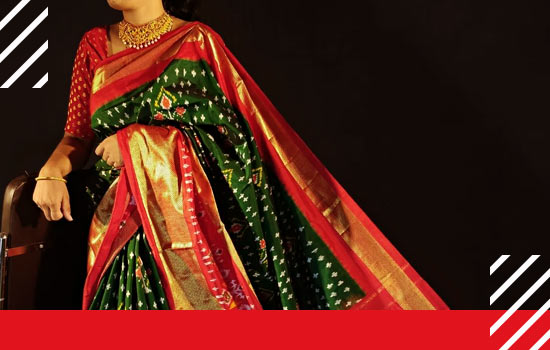One cannot deny the fact when it comes to the variety of textile designs and authentic weaving patterns that India is blessed with.
Every state in the country has its roots firmly attached with the bygone era that still reflects through handicrafts and hand-looms.
One such art that has been derived from the foreign land but still managed to reach the country and become a prominent part of our culture is the – Ikat Technique.
Let us dive in detail and find out what exactly Ikat is all about!
Meaning
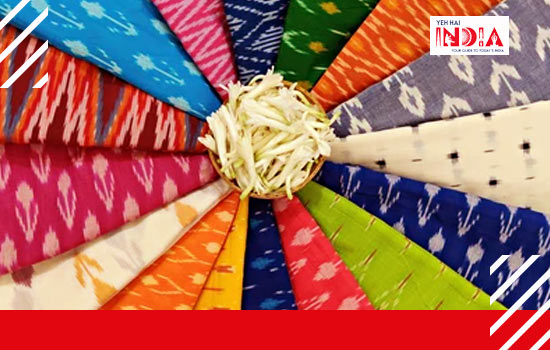
‘Ikat’ is a dyeing technique where resist dyeing process takes place.
The bundles of yarn are tightly tied together and dyed according to the required number of times to create a pattern.
It is a complicated process as the weaver needs to be precise with the threads and dye them with utmost caution.
The dyed threads needs to be accurately placed to form correct patterns while weaving.
Recommended Story – Tie & Dye Techniques in India- Bandhani, Ikat & Lehariya
History

The history of Ikat is rather interesting as different parts of the world came up with the technique for it simultaneously.
The Europeans were introduced to Ikat by the Duth traders from South East Asia. Ikat is practiced in India, Indonesia, Japan, and other major South-Asian countries.
It is even prominent in Central and South American countries like Argentina, Bolivia, and Mexico.
The double- woven Ikat fabrics are more popular in India, Indonesia, Guatemala, and Japan.
One interesting fact here is that every Ikat Weaving group have their own distinctive patterns, styles, and the choices of colours.
Types of Ikat Weaving
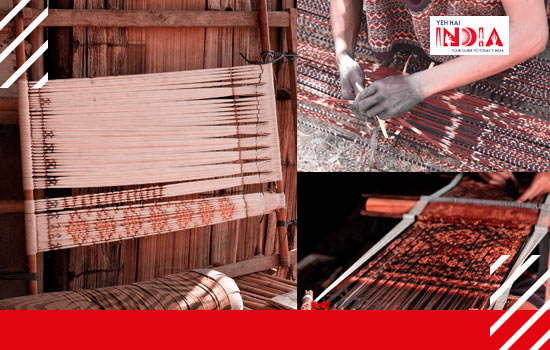
1.Warp Ikat
The Warp Ikat has the weft yarns dyed in a solid colour whereas the warp yarns are Ikat dyed.
The pattern is clearly visible where the weaving in the weft threads increases the visibility and prominence of the colour and completes the fabric formation.
2. Weft Ikat
Here, the weft threads are Ikat dyed and is proven to be more difficult than warp ikat as the pattern formation only takes place as the weaving progresses.
This means the weaver needs to constantly readjust and centre the yarns in order to ensure that the pattern is formed correctly.
3. Double Ikat
Out of the three, Double Ikat is the most complicated where both the warp and weft threads are resist-dyed before the start of the weaving.
It requires advanced skills due to which it is the most expensive.
Ikat Fabric

The process of creating the Ikat Fabric involves various steps –
- The pattern is first drawn on the warp and weft yarns by hand.
- The weaver then matches the planned pattern by tying the yarns.
- Later, the threads are dyed in specific colours so that the colour is completely absorbed and at the correct positions.
- The ties are then untied, and the yarns are strung on the loom.
- The fabric is woven together and the colourful pattern of motifs can be seen emerging on it.
Journey in India
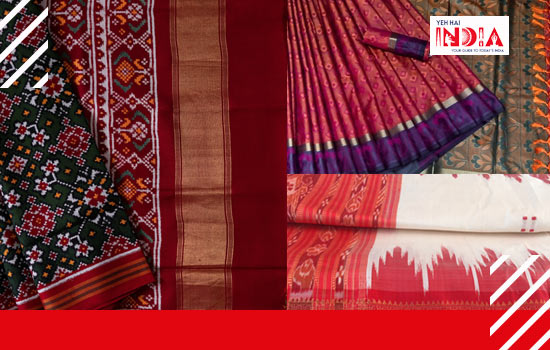
Ikat is prevalent in the states of Andhra Pradesh, Telangana, Orissa, and Gujarat.
The Ikat market coming from India has been proven to be a profitable market both locally and internationally.
It has a sizeable market and today, the ‘Handicrafts and Handlooms Export Corporation of India’ (HHEC) exports the Ikat Fabrics across Asia, Europe, Australasia, and North America.
The process of dyeing and weaving still continues to be done at home.
It is done by all the members of the family who have been taught and are teaching the upcoming generation.
Recommended Story – Kalamkari: A Unique Artform
Ikat in Andhra Pradesh and Telangana
The Nalgonda district of Telangana has 40 villages where the ‘Padmashali’ and “Devengula’ communities are engaged in Ikat weaving with each village specialising in specific processes of Ikat production.
This ensures the suitability and being able to cater to the various needs of the definitive market segments. There are up to 800 Ikat weavers in the Nalgonda district alone.
Their specialisations can be further elaborated with few examples –
- Pochampally, Puttapaka, and Choutuppal are known as the home of most skilled artisans of Ikat dyeing and weaving. The weavers here specialise in the production of silk and cotton sarees, shirting material, bedding and furnishings of single warp, weft or double Ikat.
- Weavers of Siripuram, Koyyalagudem, and Velanki specialise in the cotton and silk yardage and furnishings that are produced for both the domestic and export markets.
Ikat in Orissa
The dominating castes when it comes to Ikat weaving in Orissa is of the Bhulia Meher and Gandia-Patra.
Some of the respected and skilled artisans who have created a niche mark and been part of the craft revival in the state are – Radhashyam Meher, Kunja Bihari Meher, Chaturbhuja Meher, and Krutartha Acharya.
Presently, main hubs in the state for Ikat production are Sambalpur, Bargarh, and the districts of Sonepur and Boundh.
Ikat in Gujarat
The Salvi Community is known as the pioneer of this textile art form and have been a prominent part since centuries.
‘Patan Patola’ is the most prominent Double-Ikat and is still widely recognised even though there are few artisans and as few as a recorded total of two families.
The number itself is self-explanatory explaining the prestige Patan Patola carries and confirms the fact that each completed item is unique and authentic in nature.
Present Scenario
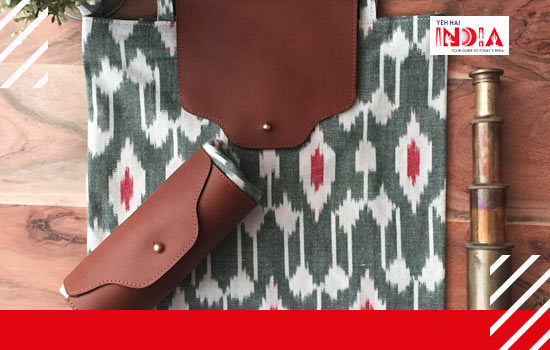
Indian Ikat has always been popular and had a global appeal.
The Government and the Non-Government Organisations along with cluster developments are making sure of the continuity of this craft and of the artisans behind it.
Apart from the basic fabrics, the market has opened and given a way to the Ikat craft in the production of contemporary items such as handbags and footwear’s.
It can be said that it has helped the craft to be able to sustain in the local and global markets.
Also Read – Straight From The City Of Ghats: Banarasi Sarees


